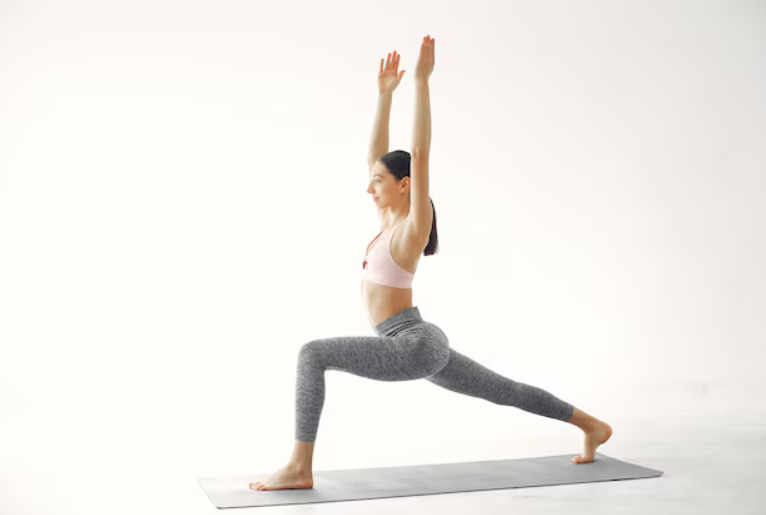Disclosure: This post may contain affiliate links. If you purchase through these links, we may earn a commission at no additional cost to you.
Orientation: Welcome to the Core Forge
Your core is more than six-pack muscles. It is the coordinated network of deep stabilizers, fascia, breath, and brain that hold you steady while you twist, reach, and live. The Core Forge Lab is a sanctuary for building that stability with kindness. Inside you will find anatomy primers, strength flows, micro-drills, readiness sliders, and a 42-day progression that respects recovery. Keep a notebook or training app nearby—data fuels your growth.
Choose your north star
Decide what matters most: pain-free movement, inversions, lifting kids with ease, or athletic performance. Your why guides the plan.
Start light, finish strong
Even elite athletes begin with breath and awareness. Let comfort lead. Load arrives in layered steps.
Track the quiet wins
Note improved balance, a calmer mind, or better sleep. Core work transforms more than your midsection.
Mantra: “I build strength from the inside out—patiently, steadily, consistently.”
The Science of Core-Centric Yoga
Yoga’s slow, deliberate patterns train both stability and adaptability. Eccentric loading teaches muscles to lengthen with control, while isometric holds create time-under-tension that strengthens fascial lines. Breath acts as the metronome, activating the diaphragm and pelvic floor for deep support. Research shows that mindful core training improves balance, reduces back pain, and enhances athletic power by improving abdominal pressure regulation.
Quick Insight
Before diving into flows, place hands around low ribs. Inhale through the nose, feeling ribs widen. Exhale as if blowing through a straw. That three-dimensional breath is your internal weight belt. Keep it nearby all practice long.
Meet Your Core Team
Understand how each region contributes so you can target what needs support.
Diaphragm & Breath
Descends on inhale, creating intra-abdominal pressure. Pair with pelvic floor lifts to stabilize spine.
Transverse Abdominis
Deep corset muscle. Activate with whispered “ha” exhales and slow marches.
Obliques
Rotate and side-bend. Train with twist flows, side planks, and controlled bicycles.
Multifidi & Back Line
Tiny muscles hugging spine. Strengthen through locust variations and bird-dog patterns.
Hip Complex
Glutes and hip flexors balance pelvic tilt. Alternate strengthening and lengthening drills.
Fascial Lines
Front and back body chains share tension. Flow between flexion and extension for balanced elasticity.
Pose Matrix: Stabilize, Mobilize, Integrate
Use this matrix to design mini-sequences or plug into the flows later. Each pose includes a cue and modification.
Supine Core Wrap
Loop a strap around ribs, inhale to expand, exhale to feel core wrap inward. Great activation drill.
Dead Bug Variations
Opposite arm/leg lowers while keeping low back neutral. Tap toes to floor for beginners.
Forearm Plank with Knee Slides
Add sliding discs or socks, draw knees to chest slowly. Focus on smooth, quiet movement.
Side Plank Tree
Place top foot on inner calf, reach top arm overhead. Builds lateral stability.
Low Lunge Hover
From lunge, hover back knee 2 inches. Engage glutes and core; breathe steadily.
Boat Pose Pulses
Bend knees, extend spine. Inhale lengthen, exhale lower halfway without collapsing.
Locust with Cactus Arms
Lift chest, hover legs, squeeze shoulder blades. Strengthens posterior chain.
Bridge March
Press hips up, alternate lifting feet. Keep pelvis level to fire TVA and glutes.
Hollow Body Hold
Flatten lower spine, extend arms/legs. Modify with knees bent or arms forward.
Flow Suites: Layered Strength Sessions
Choose the session that fits your time and training goals. Each flow combines activation, load, and integration.
Foundation Flow (20 min) Power Pulse (35 min) Inversion Prep (45 min)
Foundation Flow (20 Minutes)
- Supine Core Wrap + Dead Bug (5 min)
- Low Lunge Hover → Side Plank Tree (8 min)
- Boat Pose Pulses → Bridge March (5 min)
- Restorative Fold with 3D breath (2 min)
Goal: Activate deep core while keeping nervous system calm.
Power Pulse Flow (35 Minutes)
- Warm-up: Cat-cow waves, hip circles, breath priming (6 min)
- Main Set: Forearm plank knee slides, Locust cactus pulses, Hollow body rockers (18 min)
- Flow integration: Chair twist to warrior III transitions (6 min)
- Cool down: Reclined twists + diaphragmatic breathing (5 min)
Goal: Build endurance and dynamic stability.
Inversion Prep Flow (45 Minutes)
- Warm-up: Wrist prep, plank scapular push-ups (8 min)
- Core ladder: Hollow holds, crow pose shifts, dolphin to forearm stand hops (20 min)
- Integration: Tripod headstand practice with spotter or wall (10 min)
- Recovery: Supported bridge + guided relaxation (7 min)
Goal: Progress toward handstands/forearm stands with mindful conditioning.
Drill Lab: Micro Challenges for Macro Gains
Tap a drill to get a focused practice, coaching cue, and rep scheme. Sprinkle these between flow days.
March Tempo Drill Anti-Rotation Hold Bear Glide Spiral Breath Twist Pelvic Reset
Select a drill to receive instructions.
Progress Tracker: Rate Your Readiness
Use these sliders before each session. Track patterns to adjust load and recovery.
Energy6/10
Core Engagement5/10
Mobility Comfort5/10
Mental Focus7/10
42-Day Core Forge Progression
Follow this framework for six weeks. Adjust volume based on tracker scores.
Phase 1 (Days 1-14): Awaken & Align
Alternate Foundation Flow and Drill Lab. Focus on breath, dead bug control, and core wrap awareness.
Phase 2 (Days 15-28): Build & Balance
Add Power Pulse Flow twice weekly, integrate anti-rotation drills, and challenge balance with warrior transitions.
Phase 3 (Days 29-42): Intensify & Integrate
Introduce Inversion Prep once weekly, maintain recovery days with restorative pose matrix, and log readiness scores daily.
Community Notes from the Forge
Adrian, Rock Climber
“Bear glides + anti-rotation holds improved my grip when I least expected it. My core finally supports my climbs.”
Serena, New Parent
“Low lunge hovers strengthened my pelvic floor after childbirth. The breath cues felt like therapy.”
Marcus, Desk Athlete
“Tracking mobility comfort made me notice that stress = tight hips. The pelvic reset drill is now non-negotiable.”
Frequently Asked Questions
How often should I train?
3-4 sessions per week is ideal. Mix flows and micro-drills. Always include one full recovery day.
Can I combine this with lifting?
Yes. Schedule yoga core sessions on opposite days or use Foundation Flow as a warm-up before strength training.
What if my wrists or back hurt?
Use fists, parallettes, or forearms for planks. Keep low back supported in hollow holds—modify until steadiness returns.
Resources & Next Steps
- Core Forge Workbook: Printable tracker pages, drill cue cards, and breath scripts.
- Audio cues: Download 5-minute core activation meditations for pre-workout focus.
- Live clinics: Join our monthly Core Forge livestream for coaching and Q&A.
Your core is the meeting place of strength and softness. Keep forging steadily—you’re building a foundation that supports every other movement in life.
Share the Core Forge Lab
Know someone craving steadier strength? Send them this lab so you can forge together.
Topics:
HealthHub Team
Wellness expert and certified instructor sharing evidence-based health tips and practical fitness advice to help you live your healthiest life.



